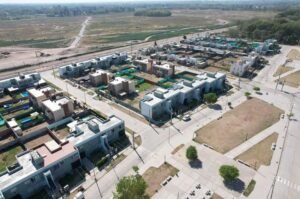

Thousands of urban developments remain unfinished or have been assigned but have not yet started construction. What is the Government’s plan for them?

One day after the official announcement by the national government regarding the elimination of the Argentine Credit Program for the Bicentennial for Single-Family Housing (PROCREAR), it is already known what will happen to the more than 4,000 homes left incomplete in the West.
These developments are located in the towns of El Palomar (Morón), Martín Coronado (Tres de Febrero), Ciudad Evita and Gregorio de Laferrere (La Matanza), San Miguel, and General Rodríguez, and they total 4,243 housing units. All of them were under construction except for the case in La Matanza, which was only awarded during the previous administration.
However, starting in the first months of this year, construction was halted due to cuts in financing, regardless of the progress made on each project or the lotteries that had already been held or were about to take place, creating growing uncertainty about their future.
The Government’s Decision Regarding the Unfinished Homes
According to the emergency decree (DNU) published yesterday, the National Appraisal Tribunal will now be in charge of pricing these homes, and the government will be able to transfer them to provinces, municipalities, or directly sell them to the real estate sector.
“The sale of the land from the dissolved fund will be promoted so that the completed homes or those under construction can be introduced to the market and sold to increase supply,” stated the Ministry of Economy in an official statement.
In the resolution, President Javier Milei stated that PROCREAR “has not been transparent, agile, nor efficient in managing the public good, generating unnecessary costs for the public treasury” and cited a report from the National General Audit Office (SIGEN) that highlighted the “delay in delivering the lots, which generates higher maintenance, surveillance, and utility costs that could have been avoided.”
Source: Viví el Oeste
Te pueden interesar:
https://www.instagram.com/diarioncomatanza
https://facebook.com/diarionco




Un Comentario.